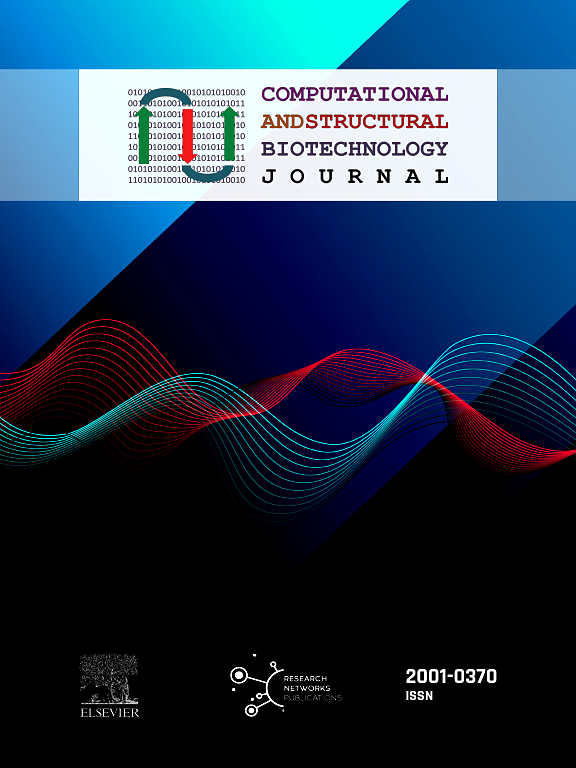Computational modelling of bone growth and mineralization surrounding biodegradable Mg-based and permanent Ti implants
IF 4.4
2区 生物学
Q2 BIOCHEMISTRY & MOLECULAR BIOLOGY
Computational and structural biotechnology journal
Pub Date : 2025-03-05
DOI:10.1016/j.csbj.2025.02.027
引用次数: 0
Abstract
In silico testing of implant materials is a research area of high interest, as cost- and labour-intensive experiments may be omitted. However, assessing the tissue-material interaction mathematically and computationally can be very complex, in particular when functional, such as biodegradable, implant materials are investigated. In this work, we expand and refine suitable existing mathematical models of bone growth and magnesium-based implant degradation based on ordinary differential equations. We show that we can simulate the implant degradation, as well as the osseointegration in terms of relative bone volume fraction and changes in bone ultrastructure when applying the model to experimental data from titanium and magnesium-gadolinium implants for healing times up to 32 weeks. An additional sensitivity analysis highlights important parameters and their interactions. Moreover, we show that the model is predictive in terms of relative bone volume fraction with mean absolute errors below 6%.

生物可降解镁基和永久钛植入物周围骨生长和矿化的计算模型
植入材料的硅测试是一个高度感兴趣的研究领域,因为成本和劳动密集型的实验可以省略。然而,在数学和计算上评估组织-材料的相互作用是非常复杂的,特别是当研究功能性的,如可生物降解的植入材料时。在这项工作中,我们扩展和完善了基于常微分方程的骨生长和镁基种植体降解的合适的现有数学模型。我们表明,当将该模型应用于钛和镁钆种植体的愈合时间长达32周的实验数据时,我们可以模拟种植体的降解,以及相对骨体积分数和骨超微结构变化方面的骨整合。附加的敏感性分析突出了重要参数及其相互作用。此外,我们表明该模型在相对骨体积分数方面具有预测性,平均绝对误差低于6%。
本文章由计算机程序翻译,如有差异,请以英文原文为准。
求助全文
约1分钟内获得全文
求助全文
来源期刊

Computational and structural biotechnology journal
Biochemistry, Genetics and Molecular Biology-Biophysics
CiteScore
9.30
自引率
3.30%
发文量
540
审稿时长
6 weeks
期刊介绍:
Computational and Structural Biotechnology Journal (CSBJ) is an online gold open access journal publishing research articles and reviews after full peer review. All articles are published, without barriers to access, immediately upon acceptance. The journal places a strong emphasis on functional and mechanistic understanding of how molecular components in a biological process work together through the application of computational methods. Structural data may provide such insights, but they are not a pre-requisite for publication in the journal. Specific areas of interest include, but are not limited to:
Structure and function of proteins, nucleic acids and other macromolecules
Structure and function of multi-component complexes
Protein folding, processing and degradation
Enzymology
Computational and structural studies of plant systems
Microbial Informatics
Genomics
Proteomics
Metabolomics
Algorithms and Hypothesis in Bioinformatics
Mathematical and Theoretical Biology
Computational Chemistry and Drug Discovery
Microscopy and Molecular Imaging
Nanotechnology
Systems and Synthetic Biology
 求助内容:
求助内容: 应助结果提醒方式:
应助结果提醒方式:


